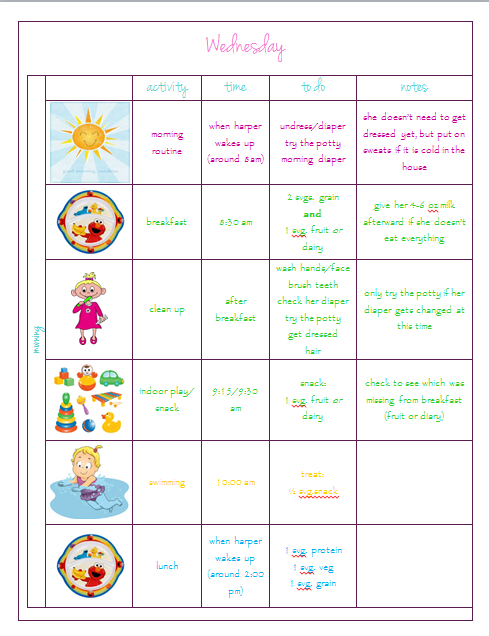Over the last year, I've been lucky enough to have the time to work on this blog and
other personal writing projects because of my awesome and fulfilling
job as an English professor at FRCC and because my amazing and supportive
husband has sacrificed his own career to take over as our daughter's primary caregiver. I thought it would
only be appropriate to invite him to share his experiences as a full-time
stay-at-home dad. This is what he said.
Recently when people ask me what I do and I explain that I
stay home with my baby girl I often get rather extreme reactions. As a stay-at-home dad, it seems as though I
am either The Greatest Guy Ever or kind of a deadbeat. I do not believe I am either and hope I do
not portray either role to my daughter.
But sometimes I can't help but feel that I have involved myself in a
position that everyone seems to have a strong opinion on and sometimes I can't
help but feel a little self-conscious.
Take for instance this morning, my baby girl and I were
running around the lake (well, I had been running, she was still sleeping in
the stroller, her preferred exercise technique). Sometimes on beautiful mornings like this
one, when I get to participate in the leisurely activities that I enjoy without
hardly any displeasing responsibilities looming over the rest of my day, I
cannot help but feel a little spoiled.
As we approached the home stretch of our run just south of
the lake along 34, I began noticing the cars on the road and wondered what
those people must have thought when they saw us. I naively assumed that there were only two
possible opinions behind those eyes watching me jogging on a Tuesday morning
while heading to work, or to school, or to jury duty, or to the dentist, or to
the hospital to visit a sick loved one: either a good-natured envious
perspective, thinking that it must be so nice for that guy and his baby to be
able to enjoy a beautiful morning together, or a more critical perspective
thinking that this loser needs to be working like the rest of us and stop
rubbing his laziness in our faces. I knew I was simultaneously reminding some
people that their day would not be quite as enjoyable as mine and others that
their ideas of social structure and family values were being challenged.
By the end of our run I felt an awkward sense of guilt, even
though I knew I shouldn't have. I crossed at the crosswalk and stopped to
change my music to distract myself from this bad mood. As I scrolled through my playlists I felt that
someone was watching me, that someone must be judging me again. Then I looked up to see an older gentleman
smoking a cigar in a two-toned Ford pickup truck; he looked directly at me,
smiled, and gave me an enthusiastic thumbs up.
As a stay-at-home dad in Loveland, I understand that some
people may have a negative opinion of this choice my family and I have
made. I mean, women are supposed to
raise the kids and take care of the house and do the dishes and the laundry and
cook dinner and wake up at night to quiet the babies and wipe the butts and
change the diapers, right? And men are supposed to be part of the workforce and
be responsible for paying the bills and supporting their families with
paychecks and health care and coming home to hang up their hat to say, "Honey, I'm home!" and shower their families with love and
attention, right? Shouldn't children see
their dad as a strong bread-winner who sacrifices for his family to keep a roof
over their head, because, after all, fathers are better at that than mothers
are? Shouldn't daughters and sons see their mothers as a source of
unconditional love and devotion and as a comforting caretaker and custodian of
the home, because, after all, mothers are more suited for these roles
anyway? After all, isn't it true that most
male mammals in the wild are more concerned with providing security and
protection than they are raising the children and occupying the home?
Look, I realize there are societal norms in our country that
suggest women are more fit for the raising of children and the caretaking of
the house and that men are more valuable for labor and money-making, and for
most cultures, these norms have historical and sociological significance.
But, I also realize we live in the 21st century and every
family is different and we are not wild animals.
The truth is, I just feel incredibly lucky to have this opportunity
to do what is best for my family. I get to spend quality time with an adorable
9 month old baby girl every day. The
worst things in my day consist of not getting as much sleep or eating a
respectable meal as much as I would like or experiencing a diaper fiasco that
leads to getting all that poop on my hands.
I once was so tired that I feel asleep at the breakfast table waiting
for my daughter to finish her banana and woke up sometime later to her looking
at me judgingly while a half-eaten banana peel lay slack in her jaw; my daily sustenance usually consists of whatever
leftover foul mixture of fruits and
veggies and meats she won't eat. But I can't really complain; I obviously get enough sleep and food, and all that poop
washes off easily. And trust me, the
highlights of my day will always be more powerful than the low points that can
be boring or stressful.
An earlier version of this essay originally appeared in the October 2014 issue of The Fourth Street Chronicle.


















































































